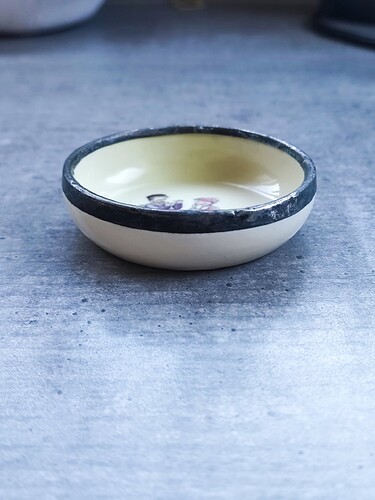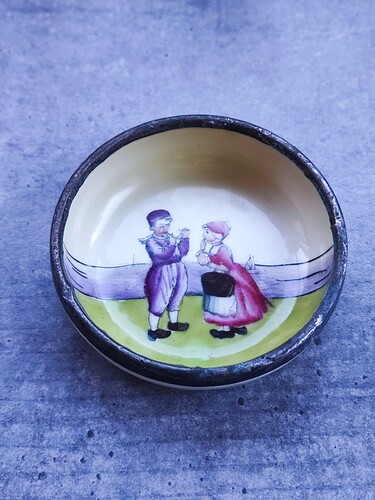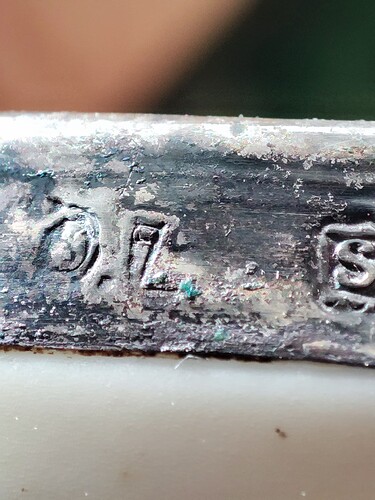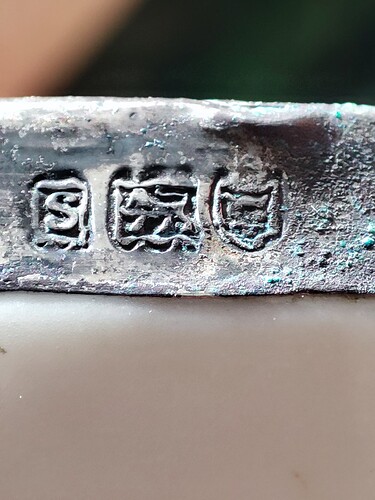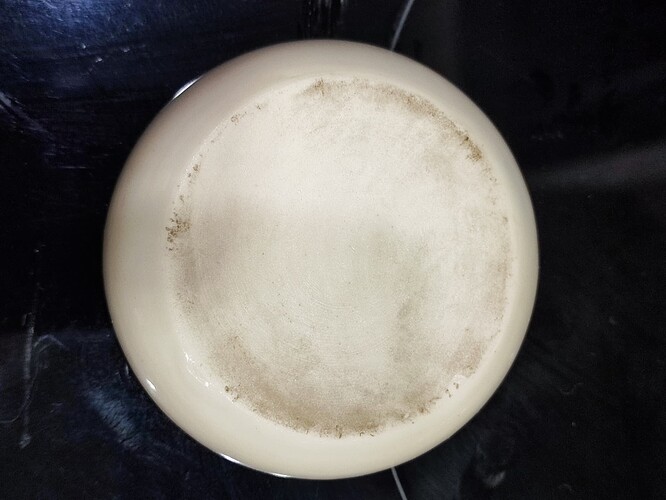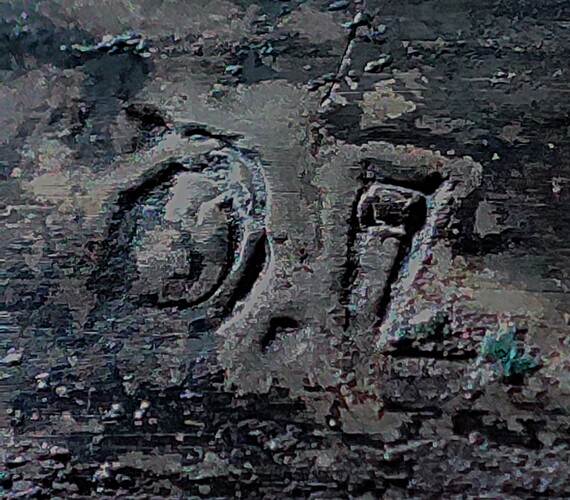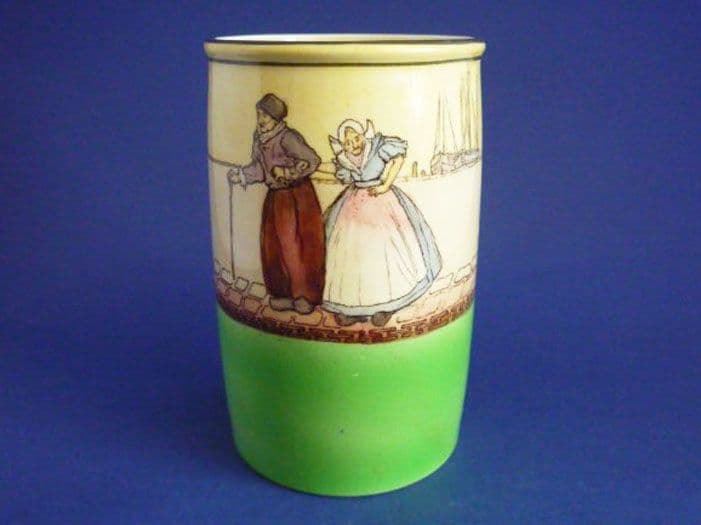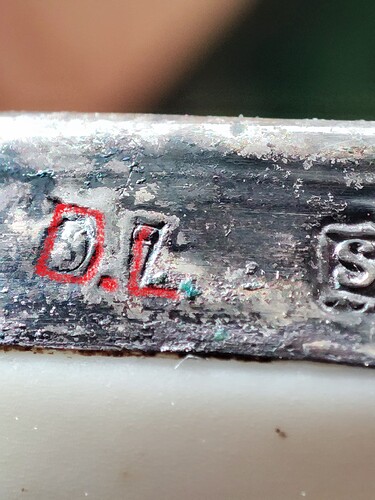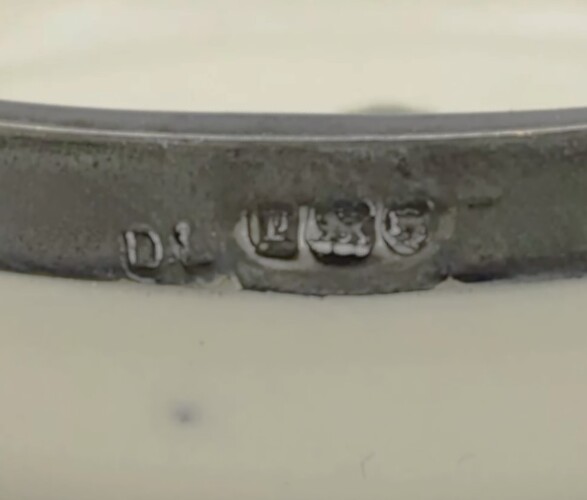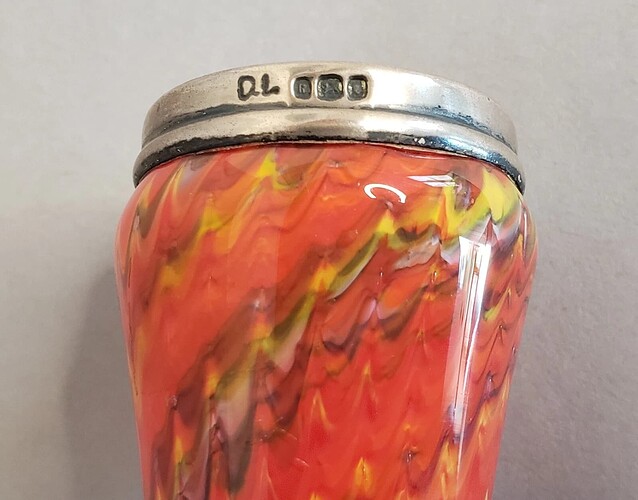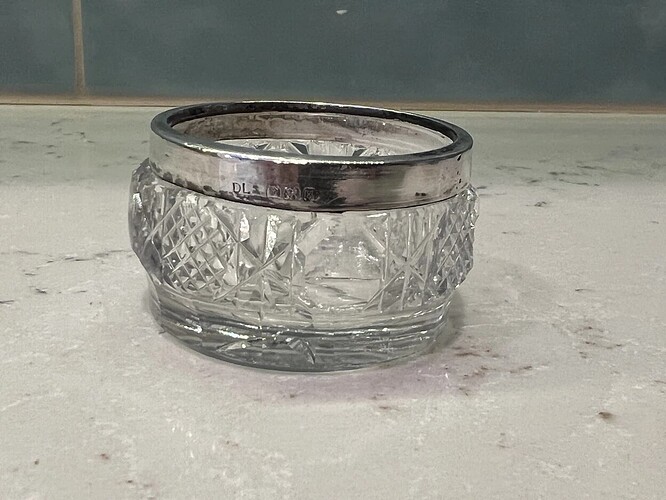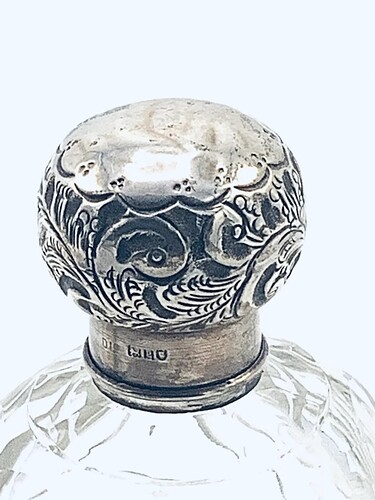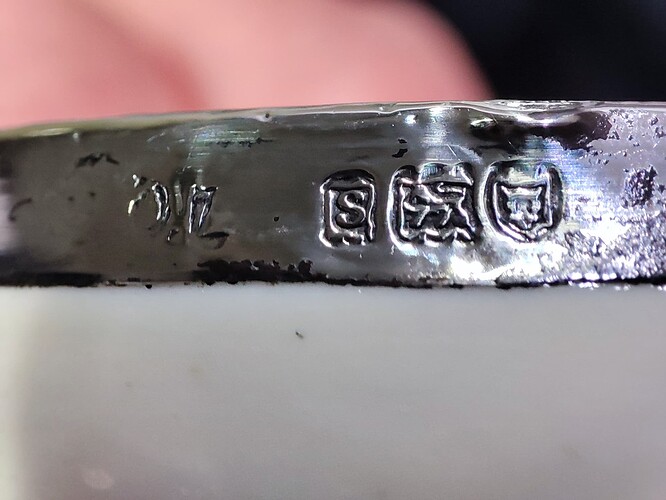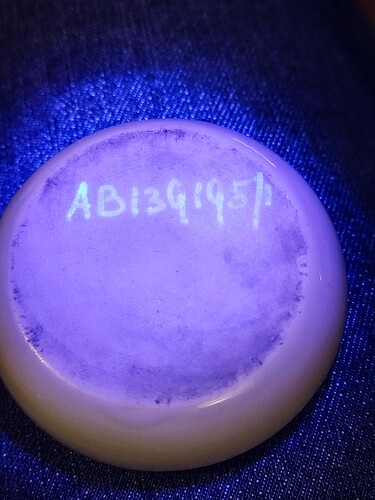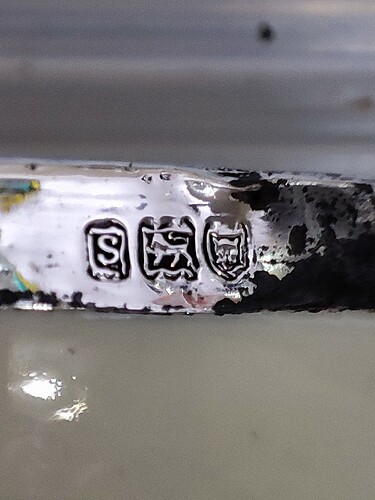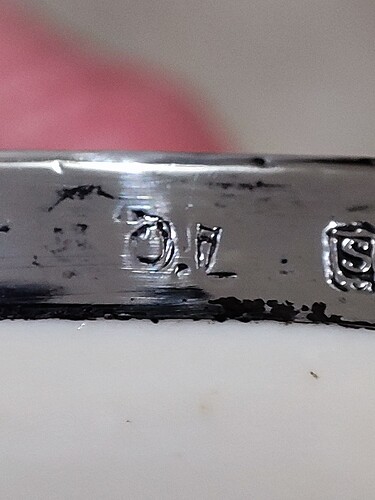Hi, recently acquired this from my mother’s estate.
Tried matching the Hallmarks but can’t say with certainty a consistent match up or even close resemblance to make any definitive date. That coupled with the green verdigris evident in the images I am picking fake English marks on a Dutch themed item, any one have any clues, also a somewhat indistinct makers mark.
Not sure what it is, but I’m pretty sure it isn’t U.K. hallmarked sterling silver.
ETA: I suppose it could be London, 1913, but I’m not at all happy with the “frames” in the punches. Never seen that before.
ETA: And of course, there would never be verdigris on sterling silver. That’s a copper oxide.
Please take a photo of the bottom of the vessel.
Isn’t it a Royal Doulton?
Featureless unfortunately like many smaller pieces, I would say the colours and style of the illustration are very reminiscent of Doulton but if the marks are fake we’ll that only reinforces the thought that this is designed to deceive.
I’m certainly not a Lovejoy-style divvy, and Phil might have a different opinion, but this piece just strikes me as a fake. I don’t like the hallmarks at all. The design on the porcelain is cartoonish, and the colors are wrong. The Doulton Dutch-themed pieces usually use a very different palette, more like this:
All I can say is that the marks are definirely not English silver hallmarks. The blue/green deposits suggest some sort of underlying base metal to me (copper?).
Phil
Yes, I thought they looked like a bad attempt at copying real hallmarks. ![]()
D.L
https://www.ebay.com.au/itm/155810678132
https://www.silvermakersmarks.co.uk/MakersDB/MakersDB.php
D.L without contour
Schindler & Co (David Loebl),
9 Aldermanbury Avenue, London
Originally it was the London Branch of Schindler & Co, Gablonz (Germany), successively taken under control by David Loeble
Birmingham 1919 hallmark
I think I may have been a bit hasty when I said that it wasn’t an English hallmark. Bart’s research looks like he might have found the answer. I recall seeing this sort of hallmark distortion on other thin-skinned silver, particularly the mounts for walking canes, etc. I am not sure exactly how the distortion has resulted in those box-like outlines inside the punch but I am now pretty sure that we have a London 1913 hallmark here. I am still a little worried about the blue/green deposits on the surface; it would be good to see a picture of the rim after it has been polished.
WOW, thank U, Phil! ![]()
At least I was on the right track for the date, if the hallmark was legit.
I still don’t like the colors, but we don’t have any evidence that it’s actually Doulton. But for art nouveau, no matter who made it, that’s a weird palette!
The Doulton indication is just my guess, based on my many years of dealing with porcelain from all over the world. I may be wrong, but I am trying to solve the mystery.
Schindlers were “importers of fancy goods” so it’s most likely that the pot is, as the decoration suggests, a Dutch piece of anonymous manufacture.
I’ll give it a clean later today and post a pic.
Really don’t like that green speckeling that’s for sure.
A bit of a rub with a jewellery wipe reveals this a bit better and even more interestingly shining a UV light on the back revealed this, someone obviously thought it had some value!
AB139195/1 - this is probably an inventory number that defines a given item in someone’s collection. As for deciphering the silver signature, I guess I was right…
Thanks for that Bart, would never have picked the maker mark.
Still not hugely distinctive Silver Hallmarks but improved a lot with the clean but as has been suggested maybe that’s just down to the thinness of the material.
Well that’s one mystery solved!
